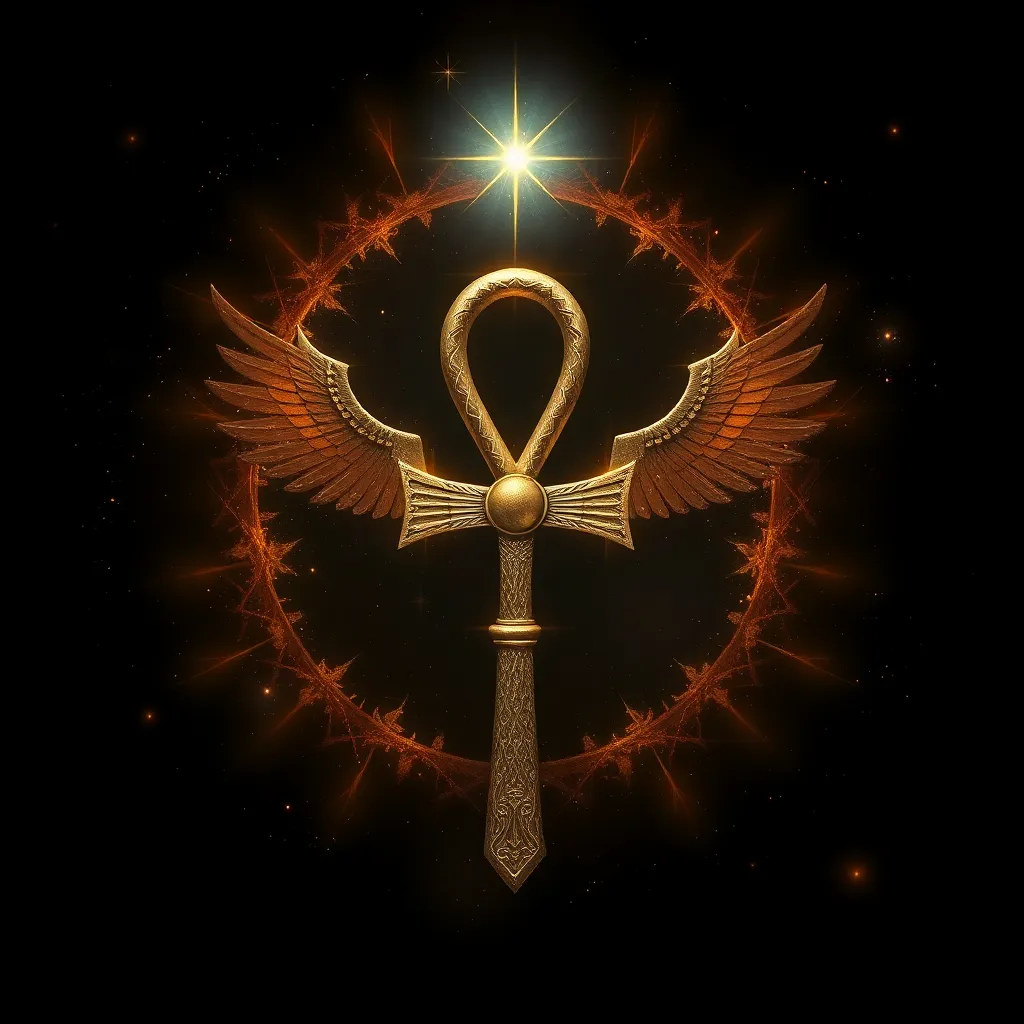The Cosmic Significance of the Ankh: The Key to Life
I. Introduction to the Ankh
The Ankh, a symbol that resembles a cross with a loop at the top, has captivated the imagination of many for centuries. Originating in ancient Egypt, it is often referred to as the “key of life” or “cross of life.” The Ankh is a powerful emblem that signifies life, immortality, and the interconnectedness of the cosmos.
Historically, the Ankh can be traced back to the early dynastic period of Egypt, appearing in tombs and temples as a representation of life’s eternal nature. Beyond its Egyptian roots, the symbol has found resonance in various cultures, embodying universal themes of existence and spirituality.
II. The Ankh in Ancient Egyptian Culture
A central aspect of Egyptian mythology, the Ankh was associated with several deities, most notably Isis and Osiris, who represented life and resurrection. The symbol was often depicted in the hands of gods and goddesses, signifying their divine power to bestow life and immortality upon the deceased.
In Egyptian art and hieroglyphics, the Ankh appears prominently, illustrated in various settings:
- As part of royal iconography
- In funerary objects and tomb paintings
- In temple reliefs, indicating divine favor
These depictions not only highlight the Ankh’s significance within religious practices but also its role as a cultural touchstone that transcended social classes.
III. Symbolism of Life and Immortality
The Ankh is fundamentally a representation of life. Its shape is believed to symbolize the union of opposites—male and female, earth and sky—reflecting the balance necessary for life to flourish. This duality speaks to the Egyptian belief in harmony within the universe.
Moreover, the Ankh is intrinsically connected to concepts of the afterlife and eternal existence. Ancient Egyptians believed that the Ankh served as a key to the afterlife, granting access to a realm where the soul would continue its journey. This belief is encapsulated in the phrase:
- “To live eternally, one must hold the Ankh.”
IV. The Ankh as a Spiritual Tool
The use of the Ankh extended beyond mythology into the realm of rituals and ceremonies. Priests and priestesses would often wield the Ankh during sacred rites, invoking its power to bless the living and honor the dead. This ritualistic use underscores the Ankh’s stature as a potent spiritual tool.
In contemporary spiritual practices, the Ankh has gained renewed significance. Many modern practitioners of various faiths incorporate the Ankh into their spiritual work, utilizing it as:
- A protective amulet
- A focal point for meditation
- A symbol of connection to divine energies
V. The Ankh and Its Cosmic Connections
The Ankh’s symbolism extends into the realm of cosmic forces and energies. It is seen as a bridge between the physical and spiritual realms, embodying the belief that life is a continuum that transcends mere existence. The loop at the top of the Ankh is often interpreted as a representation of the cosmic womb, from which all life emerges.
This cosmic perspective emphasizes the Ankh as a symbol of unity. It embodies the idea that all beings are interconnected, and through the Ankh, one can access the universal life force that binds the cosmos together.
VI. The Ankh in Contemporary Culture
In recent years, the Ankh has experienced a resurgence in contemporary culture, appearing in various forms of art, fashion, and design. Its striking shape and deep symbolism have made it a popular motif among artists, jewelry designers, and fashion enthusiasts alike.
Beyond aesthetics, the Ankh has found its place in modern spirituality and wellness movements. Many individuals adopt the Ankh as:
- A symbol of personal empowerment
- A reminder of the importance of life and health
- A connection to ancient wisdom and practices
VII. The Ankh as a Source of Inspiration
The influence of the Ankh extends into literature, music, and popular culture. Writers and musicians often draw on the symbol to convey themes of life, death, and rebirth. The Ankh serves as a powerful metaphor for the human experience, representing resilience and the cyclical nature of existence.
Across different communities, the Ankh holds personal interpretations and meanings. It resonates with various groups, including:
- Spiritual seekers
- Those interested in ancient history
- Individuals exploring their African heritage
VIII. Conclusion: The Enduring Legacy of the Ankh
Throughout history, the Ankh has remained a powerful symbol of life, death, and the cosmos. Its significance has evolved but has never diminished, serving as a reminder of the mysteries of existence and the interconnectedness of all life forms.
As we reflect on the Ankh’s journey through time, it becomes evident that this ancient symbol continues to offer insights into our understanding of life and the universe. The Ankh, as the key to life, invites us to explore our own spiritual paths and acknowledge the profound connections that bind us to each other and the cosmos.




